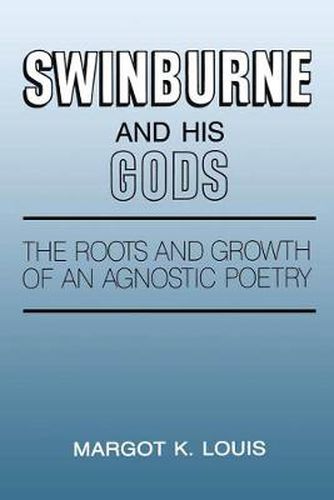Readings Newsletter
Become a Readings Member to make your shopping experience even easier.
Sign in or sign up for free!
You’re not far away from qualifying for FREE standard shipping within Australia
You’ve qualified for FREE standard shipping within Australia
The cart is loading…






Swinburne and His Gods is the first serious critical analysis to examine the poet’s background in the high church in the context of his work. Louis clearly shows Swinburne’s fierce and intimate hostility toward the church and reveals his particular irritation with the doctrines of Newman, Keble, and Trench. In her explanation of his poetic use of sacramental imagery, especially those images connected with the Last Supper, Louis shows how Swinburne’s eucharists can be murderous or erotic, aesthetic or republican. The demonic parody that characterizes Swinburne’s work is shown to have developed through experimentation with neo-romantic alternatives to Christianity: first through the evocation of a quasi-sadistic pessimism, then in the embodiment of the sun-god of Art, and, finally, as a feeble gesture toward an unknowable deity which moves elusively both within and beyond the natural world. Rather than imposing artificial unity on the poet’s career, Louis presents his work as an integrated series of serious and brilliant experiments in Romantic art.
$9.00 standard shipping within Australia
FREE standard shipping within Australia for orders over $100.00
Express & International shipping calculated at checkout
Swinburne and His Gods is the first serious critical analysis to examine the poet’s background in the high church in the context of his work. Louis clearly shows Swinburne’s fierce and intimate hostility toward the church and reveals his particular irritation with the doctrines of Newman, Keble, and Trench. In her explanation of his poetic use of sacramental imagery, especially those images connected with the Last Supper, Louis shows how Swinburne’s eucharists can be murderous or erotic, aesthetic or republican. The demonic parody that characterizes Swinburne’s work is shown to have developed through experimentation with neo-romantic alternatives to Christianity: first through the evocation of a quasi-sadistic pessimism, then in the embodiment of the sun-god of Art, and, finally, as a feeble gesture toward an unknowable deity which moves elusively both within and beyond the natural world. Rather than imposing artificial unity on the poet’s career, Louis presents his work as an integrated series of serious and brilliant experiments in Romantic art.